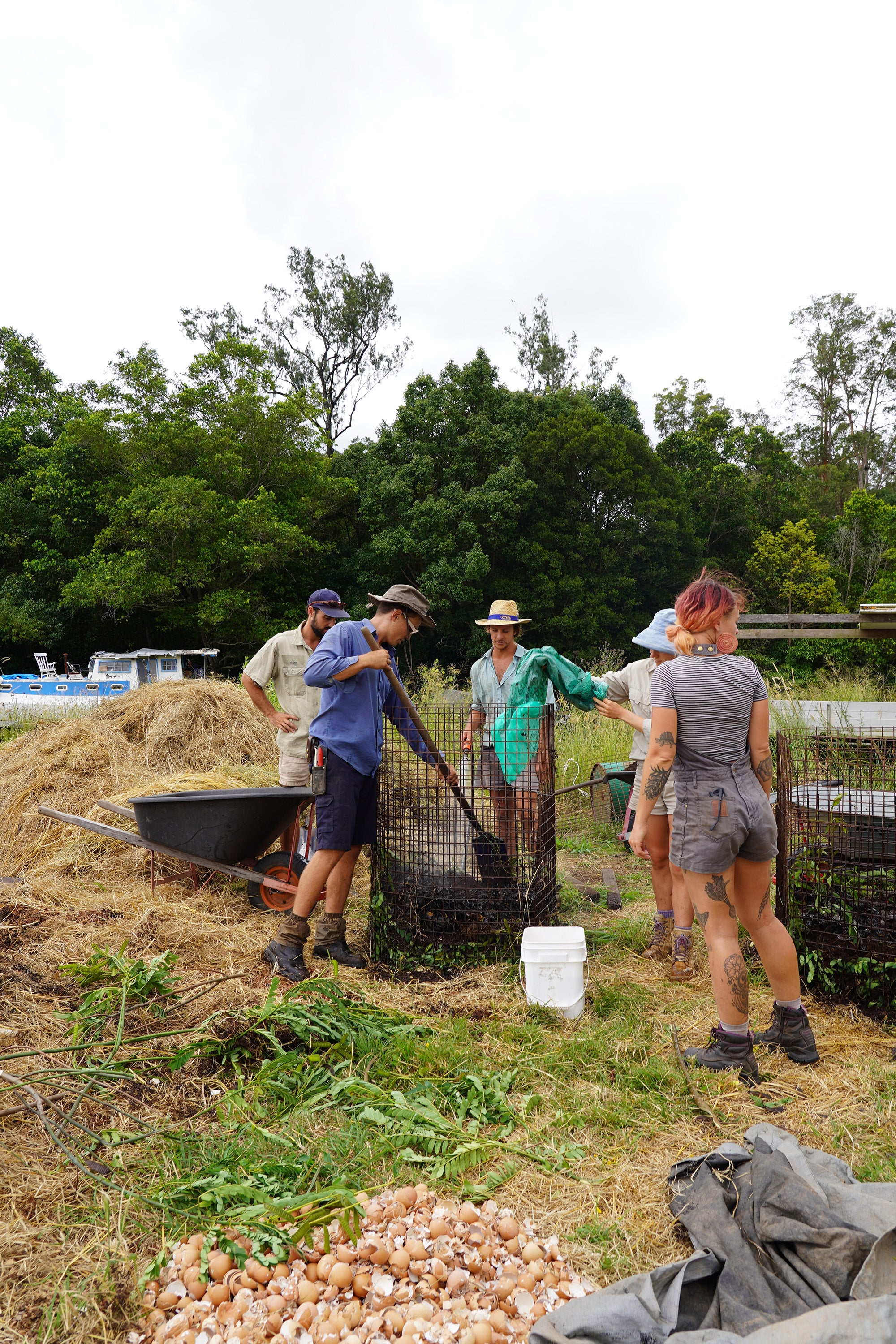With the help from our friends out at Loop Growers – just 25km from Meanjin (Brisbane) – we are testing the compostability of our new 100% merino wool Dancing Daisies blanket. After a successful composting test last year with a sample blanket, we want to confirm that our own product is also compostable.
Loop Growers is a closed loop farm using cafe yields to make compost rich enough to grow veggies that is then sold back to the cafes. We love the Loop crew and have already featured them on our blog.
So we cut up one of our Dancing Daisies blankets (it sports different colours to the final design as it was in the yarn test phase) and got composting! The plan? To see how the blanket decomposed in two environments, a worm farm and a commercial compost pile.
Our co-founder Sammy went out to Loop in mid-February to work with farmers Alice and Phil, and intern Brodie, on building the commercial compost and ensuring the blanket was prepped for its composting journey. Here’s what building a commercial compost and a thriving worm farm looks like.
The commercial compost
Building the commercial compost was a fascinating process with many stages and materials.
First we collected a few wheelbarrows of last year’s compost:

Then we collected other materials from around the farm to enrich the compost. Here’s some ash collected from the firepit:

And some decomposed leaf matter from the creekside:

We also collected some manure:

Other materials were worm juice, freshly cut green matter and seaweed...
Then we prepared the wire cages for the compost to go in:

Next, it was the blanket’s turn (and our 100% organic cotton label) to be readied for composting:


And even though it felt strange, that meant cutting the blanket up:

We cut it in half so we could use one half for the commercial compost, and one for the worm farm, and then into strips:


Then we used chicken wire to create a cage for the blanket halves so we could easily dig it out of the compost to see its progress:

This is the blanket ready for composting:

Then the building of the compost itself began:

We layered fresh cut greenery, with manure, soil, ash, creekside wet matter, juice from the worm farm, and even eggshells, all the while hosing it down:


We dug sticks vertically into the compost to assist in aerating the composting:

 And then it was time to put the blanket in:
And then it was time to put the blanket in:

 And before we knew it, it was covered with the rest of the organic material:
And before we knew it, it was covered with the rest of the organic material:




Finally, we wrapped the compost in tarp to encourage as much heat as possible, and composting to occur faster. The temperature in a compost such as this will reach upwards of 60 degrees celsius.
Next it was time to do the worm farm…
The worm farm compost
The worm farm at Loop is in a couple of old bathtubs. Usually, the yield is processed (washed) on top of this so the excess water is used to keep the worm farm moist. Nothing at Loop is wasted and we love that!
 The worm farm at Loop
The worm farm at Loop
Alice turned over the worm farm to show me the worms. In the foreground is half of the Dancing Daisies sample blanket, cut up and ready to compost!

 We placed the test blanket in the worm farm and covered it with worm farm compost:
We placed the test blanket in the worm farm and covered it with worm farm compost:

You can see the worms in the soil ready to start eating the wool fibres in the blanket:

Then we covered the worm farm with damp hessian sacks and then shade cloth to protect it from the sun.

And now we wait for the composting magic to happen!

